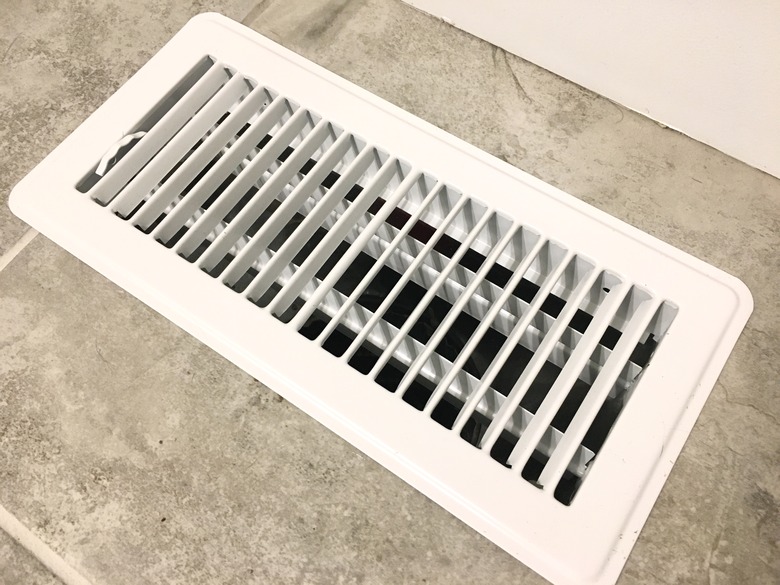My AC Damper Doors Are Stuck
We may receive a commission on purchases made from links.
Heating and cooling systems rely on a network of ducts and vents to deliver conditioned air to a home's living areas. Air conditioning, or AC, damper doors operate within a system's network and help to regulate air flow throughout the home. Damper doors come in different types that use different methods of operation. When a damper door gets stuck, knowing the type of door affected can help in determining how to fix it.
AC Zone Dampers
AC Zone Dampers
As most heating and cooling systems operate within a closed-air environment, these systems rely on air delivery routes to deliver a set amount of air to each room within a home. AC dampers exist in different zones or areas in a home's overall layout. Each damper device helps regulate air flow within a particular room or zone. Dampers use a door mechanism that opens to allow more air flow or closes to reduce air flow in a particular zone.
When an AC damper door gets stuck, this can potentially offset the balance of air moving through a closed-air system. As a result, heating and cooling units may begin to have problems and operate at less than optimal efficiency levels. Before assuming that the damper door is stuck, double-check the thermostat for that zone; it may need new batteries or replacement. In addition, check the registers in the affected rooms to make sure they're open.
Manual Damper Doors
Manual Damper Doors
A manual AC damper door relies on a user-operated lever that opens and closes off a zone or room's air flow. When the lever spans the width of a room duct, this blocks off air flow to the room. When the lever runs parallel or in the direction of the duct passage, this allows air to enter the room. Adjusting a lever to be partly closed or open increases or decreases air flow to a room.
In cases where a damper lever was mounted improperly, the damper door may not produce the desired effect. Try repositioning the damper door by moving the lever to different positions. Improper mounting may also cause the door to get stuck, depending on how the door is situated inside the duct; that section of ductwork and the damper may need replacement to resolve the sticking issues.
Automated Damper Doors
Automated Damper Doors
An automated damper operates off thermostat controls that regulate when damper doors open and close. An air conditioning system may have multiple thermostat controls for different rooms or zones or a centrally located thermostat control. Multiple thermostats allow for better control of temperatures within different areas of a home. Based on thermostat signals, damper doors open and close as needed.
An automated damper door relies on a motor device to receive signals from the thermostat and open and close damper doors. When a damper motor malfunctions or fails, AC damper doors get stuck since no signal or motor operation exists. If the dampers are accessible, check the dampers and motors; there may be debris or rodent damage to the wiring. You may need an HVAC professional to repair or replace malfunctioning zone dampers.
Poorly Fitted Damper Units
Poorly Fitted Damper Units
As different heating and cooling systems use different ductwork and vent configurations, AC zone dampers can come in different shapes or forms, such as square, round, or rectangular. To promote even air flows, damper stations should fit snugly in a duct passage to prevent air leaks from forming.
In effect, a poorly fitted damper unit can result in air leaks along ductwork passageways. When this happens, damper doors may allow too much or too little conditioned air to pass through. Over time, damper units may begin to warp and lose their original shape. As a result, damper doors can start to stick as misshapen damper and ductwork surfaces prevent the doors from moving.
Replacement of the damper unit is probably the best solution. If accessible, you may be able to remove the damper and replace it with a properly sized unit. Alternatively, call in an HVAC professional to remove and replace ill-fitting damper units as well as test, clean, and perform maintenance on the entire heating and cooling system.
